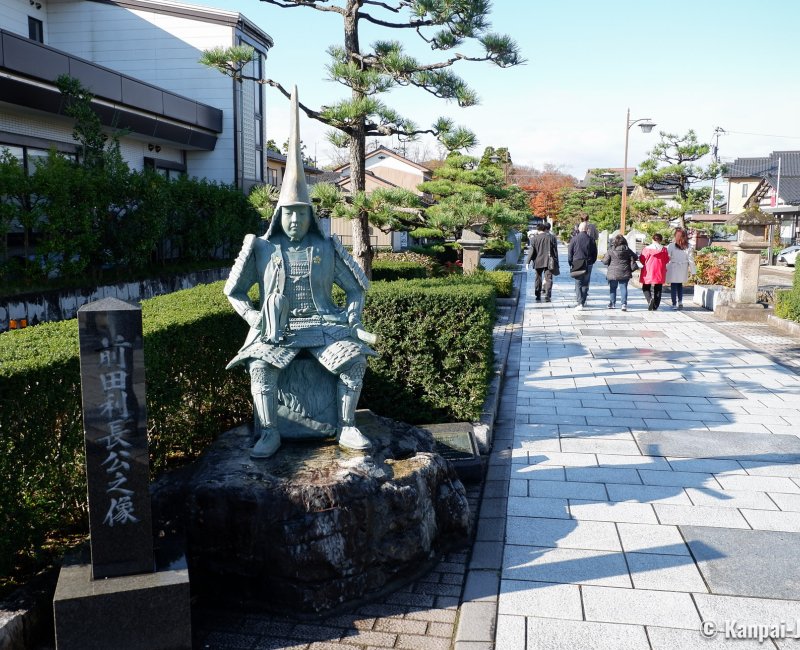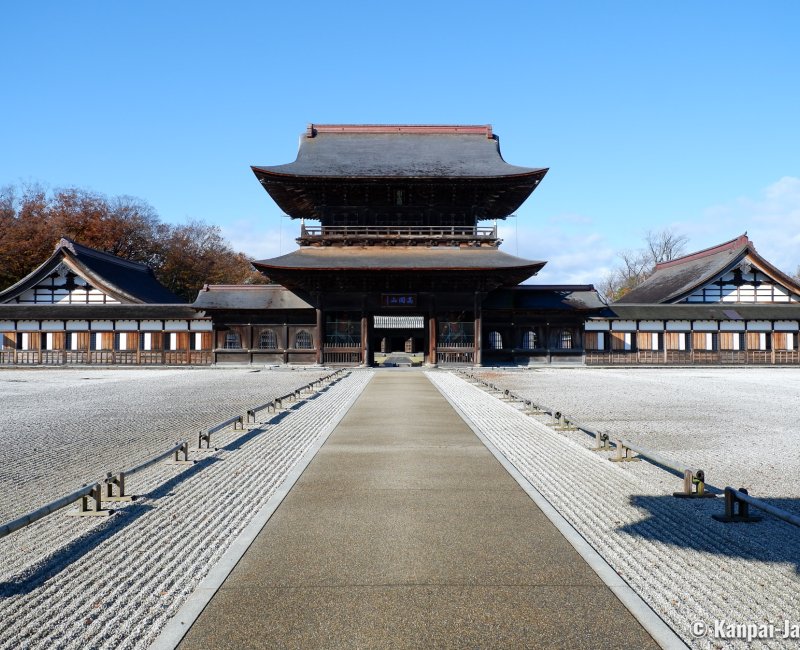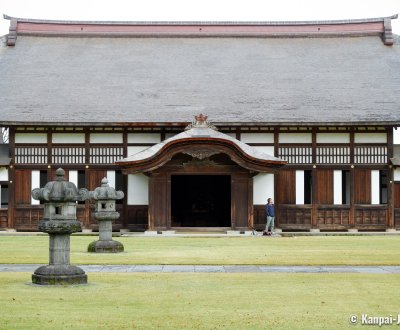Zuiryu-ji
Toyama’s Most Important Temple
Zuiryu-ji is a Zen Buddhist temple of the Soto sect located in Takaoka in Toyama prefecture in Japan. It is one of the most important in the area, and attracts tourists thanks to its refined architecture and the originality of its history, in connection with the Maeda clan, that ruled over the region during the feudal period.
Completed in 1613, the temple was initially named "Hoen-ji". Founded on the order of Maeda Toshinaga (1562 – 1614), second local lord of the Kaga Domain who also lived at Kanazawa Castle, the site was renamed one year later "Zuiryu-ji", after the daimyo’s posthumous title.

In memory of Maeda Toshinaga, the founder of Takaoka
After Toshinaga’s death, his younger brother and successor, Maeda Toshitsune (1594 – 1658) was in charge of the temple. He endeavored important enlargement works from 1645, under the direction of master craftsman Yamagami Zenemon Yoshihiro. The works lasted about 20 years and ended on the year of celebrating the 50th anniversary of Toshinaga’s passing.
Temple of the Maeda Clan dedicated to Toshinaga, Zuiryu-ji is now considered as a perfect example of Zen Buddhist architecture of the early Edo period (1603 – 1868).
Shichido garan, the ideal architecture of a Zen temple
The various buildings making the Zuiryu-ji follow an axis of symmetry and their layout looks like the silhouette of a human body. Among them, the 7 main pavilions show a layout considered perfect for a Buddhist complex which is called "shichido garan", that is to say "the 7 halls of the ideal temple".

Zuiryu-ji’s shichido garan unfolds its 7 buildings like the following:
- Somon, the 1rst gate of the site, viewable from the street and whose architecture was inspired by Japanese castles 🏯’ gates, with several parts in metal.
- Sanmon is the temple’s 2nd gate, built in 1654 and rebuilt in 1820. Of an impressive size, it is preceded by a large gravel courtyard arranged in a dry karesansui garden.
- In the center and surrounded by large well-maintained lawns, Butsuden is the heart of the complex. Built in zelkova wood, this hall shelters the Buddha worshiped here: Shakyamuni, the historical Buddha, as well as aspiring Buddha Manju, and Fugen Bosatsu symbolizing meditation and its practice. On a side note, christian relics are also preserved here, thanks to the action of Takayama Ukon (1552 – 1615).
- Built in hinoki cypress wood, the main hall Hodo (or Hatto), is located on the central axis and at the end of the sacred grounds, like the head of a man. Its large 616m² superficies shelters a Buddhist altar and also a small shrine.
- On the left side, the Sodo hall (or Zendo), where monks are taught Zen teachings.
- In front, on the right wing of the complex, the building Oguri (or Kuri) shelters the large kitchen and the administrative office of the Zuiryu-ji.
- In the back of the grounds, lastly, is the Daisado pavilion, dedicated to the tea ceremony and built with earthen walls to ensure protection against fire 🔥.
Except for the Butsuden which is alone in the center of the enclosure, the other buildings are all connected together by a covered passageway called Kairo. Of about 300 meters long, it allows to walk around the complex. It offers various points of view on the temple, from its doors and windows.
There are moreover, 5 well-aligned mausoleums located on the side of the site, and dedicated to:
- Maeda Toshinaga, the second Kaga lord;
- Toshiie, Toshinaga’s father and founder of the Maeda Clan;
- Oda Nobunaga, father of Gyokusenin, Toshinaga’s wife;
- Ikoma Kitsuno, an unofficial spouse of Nobunaga (the official was No-hime); and,
- Oda Nobutada, Nobunaga and Kitsuno’s son.

A recommended guided tour
To discover all Zuiryu-ji’s architectural and historical subtleties, we recommend booking in advance the guided tour, available in English and provided by one of the temple’s monks or a volunteer. You can then walk into the large quiet grounds with a passionate guide who will tell a lot of interesting stories.
Monks who live at the temple all year round mingle with one-day visitors. One can then watch them carefully maintain the green lawns, praying or practicing zazen meditation.
In the end, the majestic construction, of a simple appearance yet richly ornamented of symbolic details, stays in the mind. The ideal symmetrical architecture of the buildings grab the attention even when not knowledgeable about Buddhism. Zuiryu-ji is definitely a must-see when traveling in Toyama’s area.

